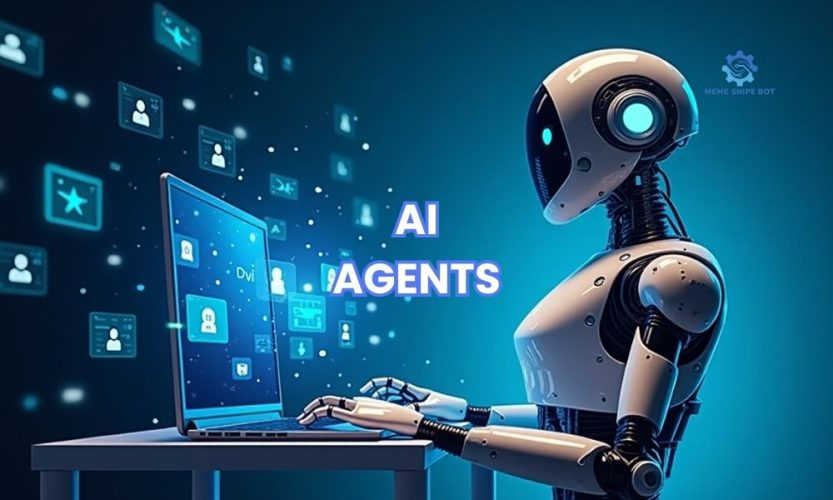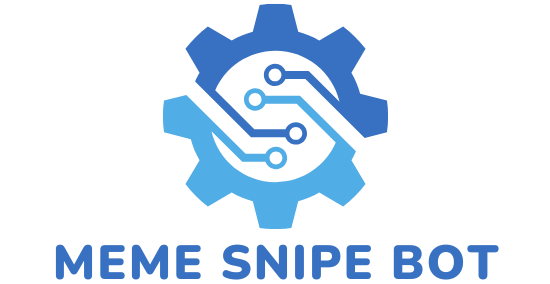5 AI agents, categorized by structure and capability, are increasingly shaping the crypto world. This article delves into simple reflex agents, model-based reflex agents, goal-based agents, utility-based agents, and learning agents, exploring how they are applied to optimize trading, enhance security, and drive innovation in the cryptocurrency space.
Contents
The rise of AI agents in the crypto era
Artificial intelligence (AI) is no longer a distant concept but has become a powerful transformative force across numerous industries, and the cryptocurrency (crypto) sector is no exception. AI agents are software entities capable of perceiving their environment through sensors and acting upon that environment through actuators autonomously to achieve specific goals.
In the crypto context, where market data fluctuates constantly, complex processes need automation, and security is paramount, AI agents offer groundbreaking solutions. They can analyze vast amounts of on-chain and off-chain data, make predictions, execute trades, detect fraud, and even manage decentralized autonomous organizations (DAOs). The diversity in the structure and capabilities of AI agents allows them to address various challenges within the crypto ecosystem. Understanding the 5 AI agents that represent these main types is the first step to harnessing their immense potential.
Classification and exploration of 5 key AI agents
To better understand how AI is changing crypto, we need to consider the fundamental types of AI agents. Based on their structure and how they make decisions, we can classify them into 5 AI agents, each with distinct characteristics and applications, especially when applied to the dynamic crypto space.

Simple reflex agents:
These are the simplest type of AI agent. They operate based on immediate “condition-action” rules. They only react to what they perceive in the present, without regard to the history of previous perceptions. Decisions are made based on the current state of the environment.
Application in crypto: In crypto, simple reflex agents can be used to execute basic automated trading orders. For example, a trading bot might be programmed to automatically sell a crypto asset when its price drops below a certain threshold (stop-loss order) or buy when the price breaks a resistance level. They can also be used to alert users to sudden market changes based on simple indicators.
Model-based reflex agents:
This type of AI agent is slightly more complex than simple reflex agents. They maintain an “internal model” of how the world works. This model stores information about the current state of the environment as well as how the environment evolves over time, based on the history of perceptions. This allows them to make decisions based on information that cannot be directly observed in the present.
Application in crypto: In crypto, model-based reflex agents can be used to build smarter trading bots. For example, a bot can track the price history and trading volume of a coin to predict short-term trends and decide whether to buy or sell. They can also be used in blockchain network security monitoring systems, detecting anomalous behavior based on known models of network operation.
Goal-based agents:
Goal-based agents make decisions based on whether an action will help them achieve a predetermined goal. They are capable of planning and considering a sequence of actions to reach a desired state. They need information about their goals and knowledge about the consequences of their actions.
Application in crypto: In crypto, goal-based agents are very useful for automated portfolio management. For example, an AI agent can be tasked with maintaining a certain asset allocation in a portfolio (e.g., 50% Bitcoin, 30% Ethereum, 20% other altcoins) and automatically execute buy/sell trades to rebalance the portfolio as the market fluctuates. They can also be used to optimize staking or yield farming in DeFi protocols.
Utility-based agents:
When there are multiple ways to achieve a goal, utility-based agents will choose the action that yields the highest “utility.” Utility is a function that maps a state (or a sequence of states) to a real number, representing the degree of satisfaction or efficiency. This allows the agent to make more optimal decisions when faced with conflicting or uncertain goals.
Application in crypto: In crypto trading, utility-based agents can be designed to maximize profit while controlling risk. For example, the agent not only aims to buy low and sell high (the goal) but also considers factors like liquidity, transaction fees, and the risk level of each decision to choose the action that provides the highest “risk-adjusted expected return.” In DeFi, they can optimize liquidity provision across multiple pools to achieve the best overall APY.
Learning agents:
These are the most advanced type of AI agent. They are capable of improving their performance over time through experience. Learning agents include a “learning element” that uses feedback from the environment to modify knowledge and improve future decisions. They also have a “performance element” responsible for selecting actions, similar to other agent types.
Application in crypto: Learning agents have immense application potential in crypto. Trading bots using machine learning can learn and adapt to changing market conditions, developing new trading strategies that humans might find difficult to conceive. In security, learning agents can detect zero-day attacks or new fraudulent behaviors by learning abnormal patterns. They can also be used to personalize user experiences on dApp platforms.
The development of these 5 AI agents, from simple reflexes to complex learning capabilities, is opening new horizons for the crypto industry.
The future of crypto with the contribution of AI agents

Applying the 5 AI agents mentioned above to crypto not only helps automate tasks but also brings intelligence and adaptability to decentralized systems. As AI continues to evolve, we can expect the emergence of more complex, secure, and efficient crypto applications.
From self-learning trading bots and intelligent DAO governance systems to advanced fraud detection mechanisms and more accurate prediction markets, the role of AI agents will become increasingly central. However, it is also necessary to be aware of the accompanying challenges, such as ethical issues in AI, security risks when agents have high autonomy, and the need for quality datasets for AI training.
In summary, these 5 AI agents, from simple reflex to learning types, are key to crypto’s future, optimizing and innovating. They shape the industry. Follow Meme Snipe Bot for the latest on AI agent advancements and let’s explore the limitless potential together.
